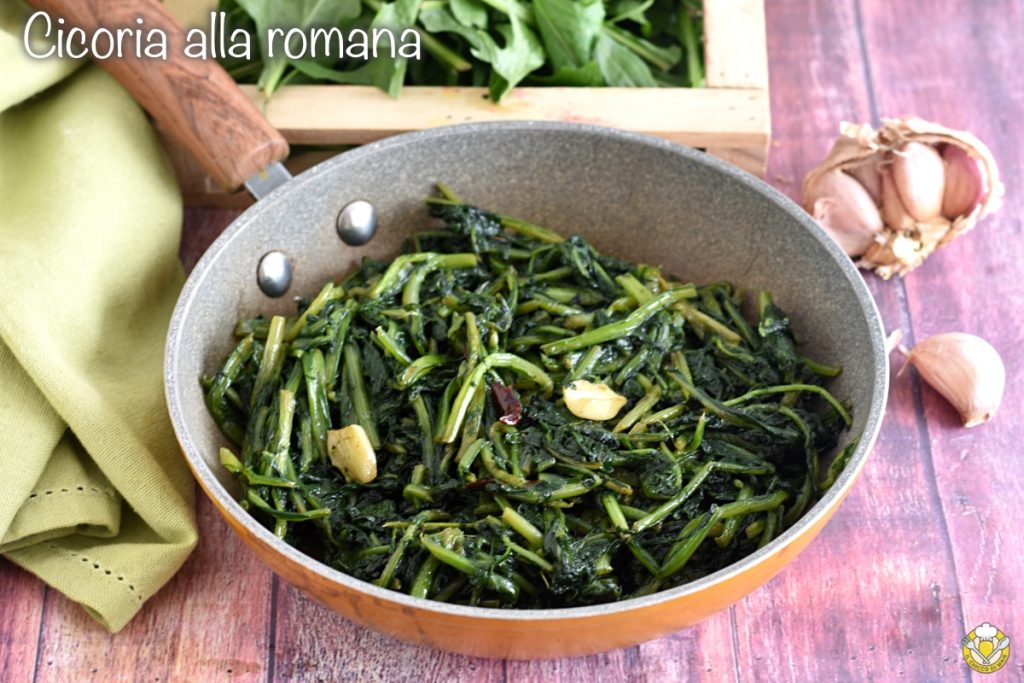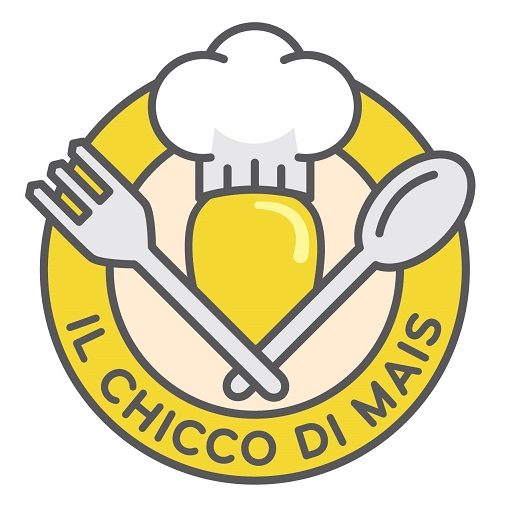Today I bring you to discover the Capitol cuisine with a recipe that is a real gem: Chicory Sautéed Roman-Style, a dish that perfectly represents the homemade cuisine of Rome, without frills but with authentic flavor. Roman-style chicory is a recipe that for its simplicity belongs to everyday cooking, but you can also find it on the menu of any trattoria among the typical side dishes of Roman cuisine. This slightly bitter-flavored vegetable becomes something special when combined with three key ingredients: extra virgin olive oil, garlic, and chili pepper. Crunchy and pleasantly spicy, chicory sautéed Roman-style pairs perfectly with meat and fish main dishes, but also with eggs and cheese. A simple and versatile recipe that will bring a piece of authentic Roman cuisine to your table.
You might also be interested in:

- Difficulty: Very Easy
- Cost: Very Cheap
- Preparation time: 15 Minutes
- Portions: 4 people
- Cooking methods: Stovetop
- Cuisine: Regional Italian
- Region: Lazio
- Seasonality: All Seasons
- Energy 136.52 (Kcal)
- Carbohydrates 7.60 (g) of which sugars 0.01 (g)
- Proteins 1.71 (g)
- Fat 12.34 (g) of which saturated 1.78 (g)of which unsaturated 0.09 (g)
- Fibers 5.83 (g)
- Sodium 100.85 (mg)
Indicative values for a portion of 170 g processed in an automated way starting from the nutritional information available on the CREA* and FoodData Central** databases. It is not food and / or nutritional advice.
* CREATES Food and Nutrition Research Center: https://www.crea.gov.it/alimenti-e-nutrizione https://www.alimentinutrizione.it ** U.S. Department of Agriculture, Agricultural Research Service. FoodData Central, 2019. https://fdc.nal.usda.gov
Ingredients for Roman-Style Chicory
- 2.2 lbs chicory
- 5 tbsps extra virgin olive oil
- 2 cloves garlic
- 1 chili pepper (dried or fresh)
- 1 pinch salt
Tools
- 1 Cutting Board
- 1 Knife
- 1 Pot large with lid
- 1 Pan non-stick
- 1 Colander
How to Prepare Chicory Sautéed Roman-Style
To prepare chicory sautéed Roman-style, start by cleaning the chicory: remove the base of the head, damaged leaves, and the end part of the stems, which is quite hard and fibrous. The inner sprouts, on the other hand, if you want, you can set them aside and use them to prepare the delicious Roman-style puntarelle. Rinse the chicory leaves thoroughly under running water, then cut the leaves into pieces about 2-2.5 inches long (1).
To boil the chicory, you have two options: you can boil it in plenty of lightly salted water for about 7-8 minutes – but once drained, you need to squeeze it as it will absorb a lot of water – or pour about 3.4 ounces of water into a large pot, lightly salt it, and bring it to a boil (2).
At this point, add the chicory leaves (3) and cover with a lid that fits the pot perfectly. Let the chicory cook for about ten minutes, stirring just once when the leaves are slightly wilted.

In this way, the chicory will not absorb much water, and the dispersion of its flavor and nutrients will be reduced. Moreover, you won’t have to squeeze it, but once cooked, you can simply drain it with a colander.
After about 10 minutes, the chicory will be soft (4). Then drain it with a colander (5). Even if you have boiled it in plenty of water, squeeze it but always leave it a bit soft; otherwise, it will dry out too much when you sauté it in the pan. As mentioned, if you have cooked it in little water, it will be enough to drain it well without squeezing it.
In a pan or non-stick skillet, pour the oil – don’t skimp! – and add the two cloves of garlic and one or two crushed chili peppers (6).

Turn on the heat and sauté the garlic well in the oil. To ensure that the seasoning is well-flavored without the garlic burning, it’s a good idea to slightly tilt the pan on the burner so the garlic and chili pepper remain submerged in the oil (7).
When the garlic is well sautéed, add the chicory (8), adjust the salt, and sauté in the pan over high heat for about 5 minutes, stirring often (9).

Serve the Roman-style chicory immediately, as a side dish for meat or fish main dishes. In Rome, in numerous pizza by the slice locations across the city, chicory cooked this way is often used to fill the famous “white pizza” (not the pinsa, which is a relatively recent invention): a sort of slightly crunchy and very airy focaccia made with the same dough as pan pizza.

Storage
You can store Roman-style chicory in the refrigerator, in a glass container, for two or three days
Tips and Variants
The recipe for chicory sautéed Roman-style, as you’ve seen, is very simple. The only risk is obtaining a vegetable that’s too dry and tough. For this reason, it should not be excessively squeezed after boiling, but retain some softness. It’s also important to clean it very well: the stems can be very fibrous and tough. Recently, you can also find bags of pre-cleaned chicory on the market, which certainly makes your task easier. If you are lucky enough to find field chicory, don’t let it slip away: it may be more tedious to clean, but the taste is undoubtedly unique.
FAQ (Questions and Answers)
Can I use frozen chicory?
Yes, if fresh product is not available, you can use frozen. In that case, boil the frozen chicory in plenty of lightly salted boiling water for 8-10 minutes and then proceed as per recipe.
What can I use instead of chili pepper?
The traditional recipe for Roman-style chicory includes a dressing of garlic, oil, and chili pepper. However, if you cannot or do not want to serve a spicy side dish, you can omit it. To add more flavor to the vegetable, you can melt two or three fillets of canned anchovies in the initial sauté.

